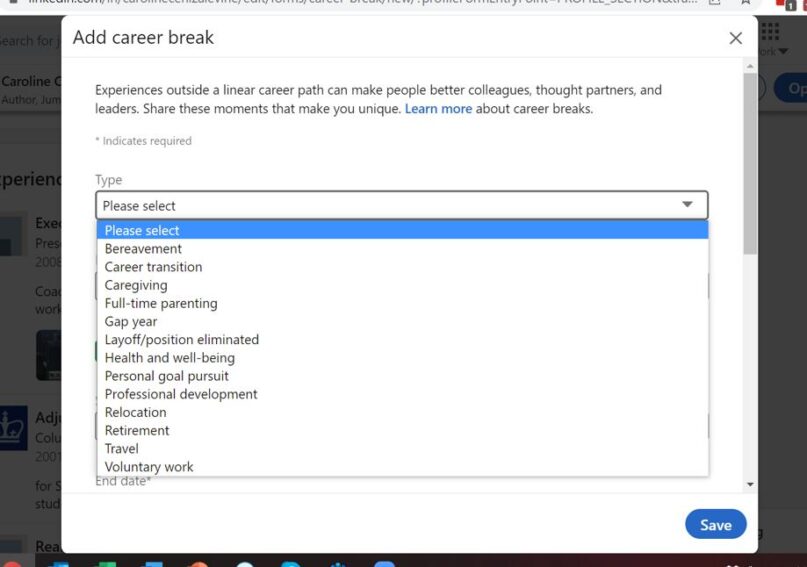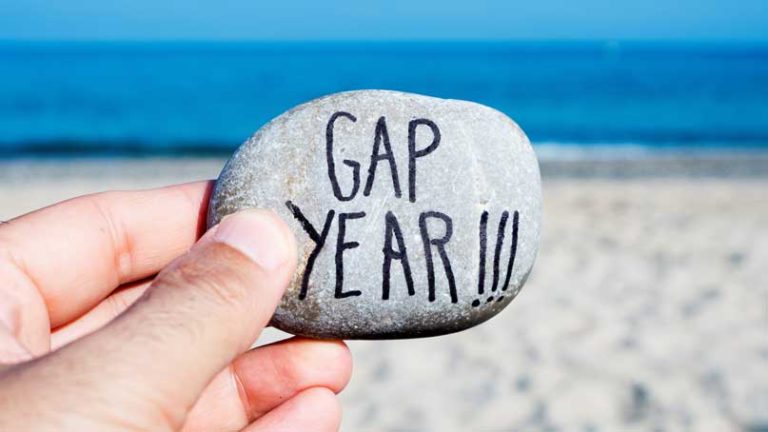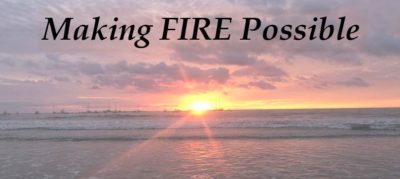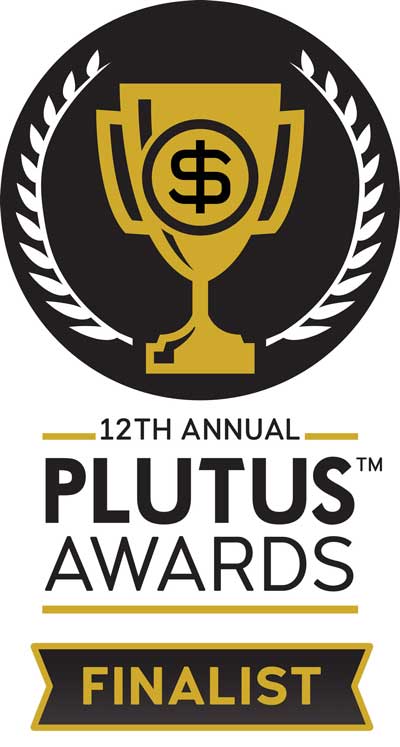One of the fun perks of writing for a well-known publication like Forbes is that I wind up on PR lists and hear about leading-edge developments early. Recently, I was invited to a webinar with a LinkedIn product director to promote the new Career Breaks feature. With this feature, instead of just posting an employment gap of months or years (and employers don’t like gaps), you can choose the Career Break category and then specifically select the reason for the time off (e.g., caregiving, gap year or another of the 13 reasons currently listed).

If you FIRE’d prematurely and want back in, use the Career Break as a placeholder so your work profile continues
FIRE isn’t in the drop down menu of selections, but Retirement is, though if your intent is to jump back into the workforce, I would select a different reason. If you’re un-retiring, you’ll have to answer why you thought you wanted out in the first place, and employers may never fully believe you want back in. Another red flag with retirement is that most retirees are older, so recruiters skimming the profile may assume you’re older than you are. Unfortunately, age discrimination is a real issue.
Instead, select Professional Development or Personal Goal Pursuit if you want to highlight the achievement aspect of financial independence. Or if you FIRE’d via geo-arbitrage, you could select Relocation or Travel. Prospective employers may have wanderlust themselves and might enjoy hearing about your adventures. Voluntary Work is another of the 13 choices and might be a closer description to what you’re doing if you have spent your FIRE time being a resource to the FIRE community.
If you haven’t FIRE’d yet and are in transition, use the Career Break feature to regain your earning power more quickly
A layoff doesn’t necessarily derail your FIRE plan but you’ll want to start earning again as quickly as possible. Selecting the right Career Break category de-emphasizes your downtime and refocuses the reader on what you have accomplished.
- Select Career Transition or Professional Development and include a description of all the activities you are doing towards your new career – e.g., courses you’re taking, books you’re reading, professional associations you’re active with.
- Select Personal Goal Pursuit if you used some of your time for hobbies that aren’t job-related but could provide a nice conversation-starter with employers.
People hire people they think they’ll enjoy working with, so giving employers a peek into your personal interests can help your case.
Use the Services Marketplace to generate some consulting business
The ability to add a Service Page and list services that you offer on LinkedIn has been around for a year now, but it is a relatively new feature on the platform, which too many business owners overlook.
Consulting on something you already know is an inexpensive business to start. You carry no inventory, and you have a lot of flexibility on what you offer and how you deliver it – hour by hour, or only certain times of the year. Take advantage of the Great Resignation leaving employers struggling to hire and turning to consultants to fill those gaps.
Worst-case, you hate consulting but you’ll pad your FIRE reserves. Best-case, you love consulting and have found a rewarding and lucrative way to pass your FIRE time, supplement your income and get to FIRE faster or keep income coming in if something happens to your day job.
Use the Creator tools to start a creative side hustle

LinkedIn is adding an audio feature, though it’s in beta mode (i.e., invite-only) right now. But Creator tools open to everyone include a Newsletter function and event-hosting via LinkedIn Live. Older tools include the ability to post articles and video.
Monetizing your content and following can be a lucrative business – Financial Samurai posted a great breakdown of the revenue streams for a six-figure blog. Given the traffic LinkedIn already generates, it may make sense to start there, rather than try to get people to come to your standalone website, but then you’re also beholden to the rules, limitations and whims of LinkedIn (or whichever platform you align with).
Still, if you’re dipping your toes in the content creation game and want a plug-and-play way to get started, you could start with a LinkedIn profile, which you likely already have.
LinkedIn has contributed to my FIRE journey
LinkedIn has been most helpful to me in expanding and deepening my network. Word-of-mouth and direct referrals have been instrumental in both my previous traditional career and now my business ventures.
While I post articles and video on LinkedIn, I haven’t used the latest Creator tools even though I’m in the content industry. I have decided to keep my work on my own platform.
How are you using LinkedIn for your FIRE journey? Are there other social platforms you prefer?


 We are Scott and Caroline, 50-somethings who spent the first 20+ years of our adult lives in New York City, working traditional careers and raising 2 kids. We left full-time work in our mid-40’s for location-independent, part-time consulting projects and real estate investing, in order to create a more flexible and travel-centric lifestyle.
We are Scott and Caroline, 50-somethings who spent the first 20+ years of our adult lives in New York City, working traditional careers and raising 2 kids. We left full-time work in our mid-40’s for location-independent, part-time consulting projects and real estate investing, in order to create a more flexible and travel-centric lifestyle.  Financial independence and early retirement is not something we originally focused on, but over time realized it was possible. Our free report,
Financial independence and early retirement is not something we originally focused on, but over time realized it was possible. Our free report, 








Very insightful article Caroline! LinkedIn often gets overlooked as just a “digital business card” or to find jobs. I had no idea about the Creator and Service tools, certainly useful to add to one’s portfolio and leverage the technology of the platform to further their FIRE journey. LinkedIn has certainly invested a lot in the user-experience over the years.
Yes, they have been rolling out many features. The tradeoff is that it’s getting a lot more commercial and pushy, both in terms of how much the platform itself tries to sell you on upgrades to Premium levels, as well as people on there getting very bold about pitching too much too soon!